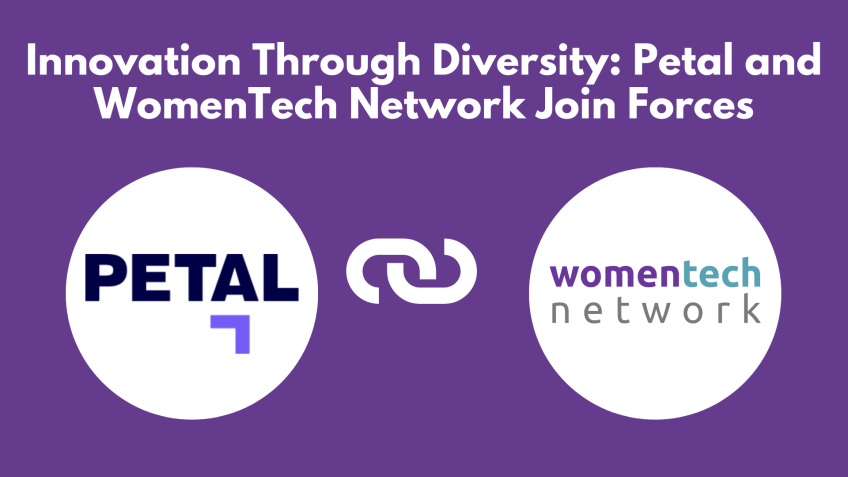How to Achieve Better Business Outcomes by Creating an Inclusive Workplace
Breaking the Glass Ceiling: Redefining the Tech Industry for Women
For years, the tech industry has been a male-dominated field. As a young entrant in the early stages of my career, finding women mentors or peers within the field seemed like an uphill battle. With the launch of a mission to bring diversity to tech, we aim to change the narrative and level the playing field for underrepresented women who face bias in their workforce.
Path of a Woman in Tech
The tech journey was a challenging road back when I started my career. At the time, a woman tech leader was a rare entity. The ones I did cross paths with during my education, like Grace Hopper and Adele Goldberg, made a significant impact on my career.
After graduation, the dearth of female peers forced me to seek women from different, less technical fields to connect with. As I navigated my way through the industry, I found myself connecting with women in media – publishers of newspapers, managers of TV stations or marketing executives. However, the landscape changed when I moved to California, where I found more women in CTO and CIO positions. Yet, the imbalance between genders in tech teams remained significant.
Despite progress in some aspects, maintaining a steady pipeline of women in tech remains a persistent challenge, exacerbated by the COVID-19 pandemic. The novel coronavirus has negatively impacted women's participation in the workforce, setting back years of progress and amplifying the existing dearth of female talent in tech.
An Opportunity Amid the Challenge
The challenges in the tech industry must be viewed as opportunities. As quoted famously, "if nothing changes, nothing changes." If we continue the same practices expecting different outcomes, we are fooling ourselves. Coming out of this pandemic, we must view this time as an opportunity to level the playing field for underrepresented women and minorities facing bias in the workplace.
Promoting Diverse Hiring in Tech
Often, the issue of diversifying the workforce is passed on to HR. This oversimplified viewpoint misses the core challenge – the need for the involvement of senior leadership and hiring managers in diversifying the workforce. Consciously stepping out of our comfort zones to engage in diverse hiring practices is a cornerstone for change.
We must broaden our horizons and look for talent in less charted waters. Mere reliance on common tech hiring platforms like LinkedIn and Dice isn't enough. Proactively positioning ourselves in forums where women and underrepresented minorities are present is key.
Revamping the Hiring Process
Leaning on diversity is not merely about augmenting the pipeline but examining each phase of the hiring process. This includes working with HR partners to scrutinize job descriptions, avoiding subtle biases, and looking beyond just skill sets. Ensuring the interviewing process involves a diverse group of interviewers also helps to minimize unintentional bias.
Furthermore, tracking data points through every step of hiring and career advancement can guide management strategies. It is essential to ensure promotions are distributed fairly, and if the math isn't adding up, one must be ready to ask uncomfortable questions.
Understanding salary disparities and consciously closing the pay gap is also a critical factor in fostering diversity. It is crucial to address potential pay disparities that could arise due to the less comfortable advocacy of women and underrepresented groups during salary negotiations.
Creating an Inclusive Work Environment
It all starts at the top. Senior leaders carry the responsibility of creating work environments that foster diversity and inclusion. At Juniper Networks, we offer programs that aid women and people of color to build networks of support. We encourage candid conversations, ongoing candid discussions, and professional growth.
Furthermore, the lack of management support, opportunity, and work-life balance are among the primary reasons women opt out of STEM careers. Leaders must ensure opportunities are kdistributed fairly and that the necessary support is offered.
The Path Toward a Gender-Balanced Tech Industry
The road to gender equality in the tech industry requires a fix on many levels, starting from hiring practices, cultural shifts in companies, management support, to work-life balance. Women need to realize that a career in tech is not just about a computer science degree. We need to hire for capability and potential.
While we strive to make tech an inclusive field, we must not forget about the business benefits it brings. Diverse companies outperform others in terms of profitability, innovation, decision-making, and employee engagement ratios. The World Economic Forum and McKinsey studies also underline the significant financial benefits of diversity.
In conclusion, the ongoing change and uncertainty present a real opportunity for leaders to distinguish themselves and drive meaningful changes. There is an acute need to work intentionally and consciously to level the playing field in the tech industry. While doing so is the right thing, it just so happens that doing the right thing is good for business too.
Video Transcription
I remember when I was first starting out in, in technology uh at the early part of my career and, and finding other female peers and mentors at that time was a challenge and maybe older than many of you.Um There were a few female tech leaders I encountered as a student. I, I had the pleasure of meeting Grace Hopper and um and Adele Goldberg who uh was very a very prominent technologist at the time. Um But in general, as I, as I finished school and kind of went out into the workplace, I, I had to look for women who were um successful in other less technical fields to connect with and look up to. Um So when I was in the media industry, for example, it was the, the, the female publishers of newspapers or G MS of our TV stations or, or marketing executives. And it wasn't until I moved to California in the early two thousands. That and I just think it's because there was a greater percentage of tech out here. Um I saw I, I found more women peers in positions of uh CTO and CIO. But even though that was the case, uh a wide gender gap persisted in the technology teams that I managed and that I saw in other companies. And the reality is that sustaining a pipeline of strong technical w women remains a persistent challenge to this day.
And I feel it's only been exacerbated by the ongoing pandemic and while neural activities have have started to resume in many parts of the world, COVID-19 has had a significant impact on women's participation in the workforce. Um uh Setting back years of progress that had been, had been made on this front. And I think that the the scenario is especially secu acute in technology which has chronically suffered this, this dearth of female and diverse, underrepresented talent at all ranks. So, you know, I look at every challenge as an opportunity and um and I think that uh you know, if, if, if, if we don't change anything, nothing changes, right? So there's a very, there's a famous quote, if nothing changes, nothing changes or I, I don't know if it was Churchill who said, you know, if you keep doing the same things and expect something different on the other side, then you're, you're kind of fooling yourself. Um So I think as we come out of this period, uh it's up to us to, to change the narrative. Um And, and this, this, this time presents an opportunity to relevel the playing field for women and underrepresented um people in tech um who face bias in the workforce.
So, you know, there was a study done last fall and something like 38% of women in tech said they were thinking of leaving their careers. And according to a study from the Kapoor Center of uh women of color and computing collaborative, um women of color felt that even more so than, than white women. Um see for seeing themselves having a long term future there. And I as the cio of a global tech company, I just find this unacceptable, unacceptable. So I'm advocating for a new movement that I call the great redesign instead of the great resignation or the great renegotiation. Um And I think we need to like really look closely at our hiring practices and our cultural practices in our company to, to build, to build a better place. Um So, you know, first let's talk about um recruiting. Um uh the, the diverse talent problem, I think too often is placed on the shoulders of hr um that it's, you know, up to them to build the pipeline and the problem will be solved. And quite frankly, it's, it's not that simple. Um I think the C suite senior leadership and all hiring managers have to be engaged in this process, male or female to make sure that um we get out of our comfort zone and, and, and not do what we tend to do in tech, which is we have a, a gap and a hole and we go to, um, the first candidate that we see has the skill set that, that we're looking for or that maybe we're connected to and familiar with, but we really engage a full diverse hiring process.
Um We have to look at different places uh for talent where, where we're not currently. So instead of just going to the obvious, you know, very broad tech hiring places, you know, linkedin dice, you know, these generic things, I think we have to start to put ourselves in places where um women and other represented mi minorities need to be found and we need to make ourselves visible um to uh to these people in these different ways.
So um you just saw Jackie and her organization, but there's also groups like women tech network, Latinas in tech tech ladies, black girls who code women in cybersecurity, Anita b.org, we have to go out and, and be where people are coming instead of expecting the people to show up and land on our doorstep.
Um Then it's not just as I said, getting that pipeline, but you have to look at every phase of the hiring process. So, um you know, working with your hr business partners, take a look at every job description first and make sure that we're not subtly um weeding people out by the language that we use um or creating job descriptions that may, you know, very much focus on skill, skill, skill skill, skills rather than talent and potential.
Um And then, you know, really look at your process of who's doing the interviewing. Um And that's on two fronts, right? So obviously you want a, a diverse group or pool of interviewers so that um unintended bias is potentially weeded out of the process. But you also wanna look like a place that people come. And so you want representation also as part of your value proposition because when people look at you, um hopefully they're gonna think, well, that's a place that is diverse and that is where I'm going to work. So, um to me, that's, that's very important. And since changing that we've seen uh a a shift in in the balance of hires um which is now very proportional to the pipeline and we're going back to, to work on the pipeline problem. Um You have to in uh uh think of inclusivity beyond day one, right? It's not just employee orientation, but it's all of the ongoing activities um that you're going to do to create a culture of openness and being responsive to when you see things not working. Um people being comfortable uh with, with raising issues and then your leadership teams being open to fixing it. Um We have to have a sense of belonging and give diverse hires uh the, the, the gross potential they need and the opportunities um the same way white men have historically received them and it, we need to do things very explicitly to make sure that nobody is sitting on the sidelines and that underrepresented groups are getting a voice during meetings and the decision making process.
The other thing is we are in technology. So uh I always say use the data. So um in the same way as you're looking through every step of the pipeline and understanding maybe where you have your drop off of, of, of losing candidates in the pipeline um to help guide your actions. It's also the same for that ongoing uh the ongoing um uh nurturing and management of the career path once somebody has arrived. So, you know, really every time you do a cycle, look at where the promotions are going and if the math isn't working, you have to ask questions and you have to ask uncomfortable questions. Um and you have to be prepared to talk about the people who, who say when you're looking to build a diverse workforce, you may be, you may be discriminating against others, but you have to take these cons conscious steps to change it and also look at your pay data. So um often you'll find disparities with women and men and um and underrepresented groups um that within the same salary band, they're not positioned equally and, and you, you see those gaps.
And my suspicion is this happens probably because women and underrepresented groups when they come to the job, the first time are less comfortable advocating for themselves. And of course, the way the salary negotiation process happens, you know, if people don't ask for what they can get or aren't comfortable arguing for it, then they're gonna start out at a lower place and that comes with, that'll continue with them if the management leadership teams don't look at this data and make conscious changes.
So I literally just went through this last week. Um as we did our process, our annual process, I held back money from my team so that I could make corrections when I saw these gaps that we needed to make sure aren't persistent. And while you're not always able to do it on the first round, you can continue to close that and be very conscious of it. Um As, as you're, as you're looking at your teams and, and you need to force the, the people who work beneath you to do the same thing. Um And lastly, we may have to be more flexible on, on where and how people get their work done. So, um you know, many of us in tech have uh our companies um uh geographically dispersed, but sometimes uh 50% of your company may, 50% of your team may land in a country that perhaps doesn't have the same um the same opportunities for women, the same uh attitude toward diversity that you know, it changes country to country, there may even be legal barriers.
So then you have to think about, um you know, one of two things, what are the actions you're gonna take to compensate for that? And they have to be very thoughtful and very explicit um in terms of enabling those people to work and not be penalized for not doing it exactly the way somebody who showed up in the office always did. Or perhaps you have to start to think about diver diversifying those geographic locations um in order to overcome that problem. So, uh I need pragmatic but they have to be conscious monitored um steps that you need to take in the process. Uh Next is kind of talking about, you know, how do we create the work environment that we need once people are hired and and are in our companies. So, um again, it all starts from the top. So senior leaders, I hope you're listening, you know, we're the ones responsible for creating the work environments that drive this kind of change. I'm talking about um some things that we do are, you know, offer multiple forms for candid conversations and professional growth.
Um You need to bolster your, your de and I approach to support employees, you know, all the time, not just during these kind of key cycles. Um For example, Juniper networks invest in programs that help women and people of color build networks of support and speak within groups without worrying about how others who don't look like or operate like them perceive them. Um We have special training groups for them. We have um uh um leadership and development, focus groups that we run throughout the company. And I have been really amazed at how surprisingly candid people are in the environment. And, you know, those of us who've been around for a long time. Uh Sharon.
Yes. So sorry to interrupt you. I think you have a scuffle right by your microphone. Um That's causing a bunch of noise. Are you maybe writing or moving a paper or something? I'm so sorry to interrupt you. It's just been a little bit distracting. Sorry. So sorry. No, no problem. OK. Please carry on. I'm so sorry to bother you, Sharon. You are doing amazing.
Sorry, everybody, I I didn't mean to disturb you. So um so yeah, so people are, are very, very candid in the environments and, and when we've been working in roles for, for a long time, I think many of us think we've seen all the problems and we understand what all the challenges are, but the reality is it evolves and it changes over time.
And so while we will hear many of those things that we expect from these focus groups, I'm, I'm constantly learning about new ones that, that we have to take on and we have to address through some of these programs. Um Obviously, visibility during the pandemic has been a problem. Um We have to become much more uh explicit about making sure that everybody is seen and, uh, I joined my company during the pandemic. So I've had to take on many steps to make sure that the people at levels that don't immediately report to me, get to see me and, and set the tone and set the values. So, um, it's, it's, it's, it's, it's something that I don't think is going to go away because the hybrid, the, the world is more likely to be hybrid than go back to what we had before. Um And so you can assume that you can do everything by walking around, but you, you, you must actually set time. So one of the things I've done is I have these sessions, I call them schmoozing with Sharon. Um We don't allow kind of the, the direct reports or my senior management.
It just becomes an open forum for individuals at, at different levels to be able to talk and get to know me and ask their questions and tell me what's going on on without any fear of, you know, who's gonna, who's gonna hear about it. Um There's many other techniques people have done um to try to create that environment where people feel, feel more comfortable and included so that you're, you're not leaving people sitting on the sidelines. Um Women in the tech industry haven't always had uh the same management support and sponsorship and mentorship support that men have. So we need to make sure that as those things are happening, they're getting distributed evenly and fairly and we have to, we have to go out and maybe advocate to find sponsors and mentors for people. Um But that maybe it doesn't even happen inside your organization. But some other part of the organization that can give them that, that, that, that those opportunities and help them see where they need to grow and develop. Um The uh uh lack of management support, lack of opportunity and work life balance are um main reasons for departures for women in stem careers. And again, we see them leave within the first few years.
Um because I think without that support, you know, they've heard people have heard about, you know, the great that, that we get paid well in our field um that we solve challenging problems. But if the leadership teams and the management aren't really making sure that, that, that opportunity is evenly distributed then um and fairly distributed, then what happens is it only feels that way for some people and, and they need to move on. So again, it requires the onus is on us as leaders and not at the people at the lower levels to always be raising their hands. Um The other thing is, you know, for those reasons. Um uh I really try to get out and spend time. Um I in both STEM and I say steam organizations, uh I don't think that all of the tech leaders are gonna come out of college with computer science degrees. I think that again, we need to be hiring for capability. We're all going to reskill, I have res skilled over and over and over again over the course of my career. Um, that's gonna happen for anyone who's in technology. And so we can assume that if you didn't graduate with a computer science degree, you don't have any future here in tech. Um, And so we need to go out to those places and, and show uh women what's possible and tell them about the great work that's here.
Um So, you know, I do that through the organizations, the education and the arts boards. And I actually now teach uh as part of my opportunity to because when I go into a classroom, it's often more than um more than half women. Um And I want them to see somebody who's, who's getting great work and having a great career. Um And so I can't scale that on my own. But if we are all out engaging with that, uh we can really show and change that this is an inclusive place. Um Juniper specifically has some other things to encourage women for careers in stem. So, uh we, we, we do this through mentorship, internship and speaking engagements. Uh like this one here to try to help people understand what's possible. We also um financially support organizations.
So we're lucky we have a fi a philanthropic arm and we will invest in that. Um But many companies may not have that, but they may have donor matching problem, donor matching programs so that uh employees can um support organizations again, like Jackie's that, that are are trying to make it possible for, for women to feel as comfortable and as empowered as they grow up uh as technologists.
Um We work through colleges uh and we have our education services offer um certification. So if your company has a product and you can go help deliver that training and get other women um comfortable with technology, it's another way to kind of bring more people into the field.
And then, as I said, once they have the positions, all of the things we discussed earlier, sponsorship, mentorship um managing that equal pay. Um and, and doing that pay equity analysis um making sure that opportunities exist for development and advancement are there. And then the other thing we really have to do uh again, particularly in this, this, you know, this time of the pandemic is women still shoulder much of the, you know, workload around Children when they're home. And during the pandemic, I think that probably became untenable for, for many, many people. Um you know, having to try to do the job and, and be around at all the exact same hours while also trying to raise their kids uh through school, my daughter was long graduated by it ha by the time it happened but, um, I think it was very, very tough on them. So, you know, I, I really listen for language around the company when I hear something like, oh, you know, that person was doing great and in the past year or so I've seen this other person surpass them and I, and I ask, ok, well, does that person have kids? You know, you really, you know, when you hear something, you know how people say, if you see something, say something, uh you know, in a, a situation, you know, an airport or something like that, I think we have to do that ourselves at work.
When we hear things, we really have to hold our, our peers and others around us accountable and sorry about the shuffling. Um, so that, that they are, um, that they're aware that again, some things that they may be doing or saying unintentionally are, are held holding our colleagues who are, you know, maybe working double time just to stay in the field, um holding them behind and then to the degree women leave the workforce in, in tech, it's really, it's really, really challenging to come back and the longer they stay away, um, the harder it is to re-enter.
So again, supporting organizations and working with organizations that kind of help get those people leveled up and, and back into the workforce and creating opportunities for them. Um extremely, extremely important. And, you know, we all do this, right? Because it's the right thing to do.
We all believe it's our right and um to, to, to have the same opportunities um that other classes of, of, of people have, but it's also the thing that makes good business sense. So, um you know, the need for diversity is clear, um more diversity equals more innovation and more innovation leads to more market growth. Um The World Economic Forum in 2020 highlighted that companies that lead in the DE I space. Um They better perform on any number of metrics that includes profitability, innovation, decision making, and um employee engagement and keeping our workforce uh that we've invested so much in versus um having the churn and having to spend the money on recruiting and uh bringing somebody up to speed in the new organization making them part of the culture.
Um Obviously, that will lead to better economic results. If we can keep the great people we have rather than having them churn out because they don't feel comfortable from a profitability standpoint. It's 26 to 25 to 36% more profitable. Um 20% higher innovation and commence commensurate uh innovation revenues uh that go along with this and up to a 30% greater ability to, to recognize um and, and uh mitigate business risk. Uh come with this, these programs, mckenzie itself did a AAA another report um showing many of the same things that inclusive companies way outperform those who aren't and they broke the companies into cohorts, those who had 30% or more executive women, 10 to 30% women executives and then less than 10%.
And not only did they show that there was uh an increase in, in profitability, but that um the gap grew wider and wider over time between these different cohorts. And yet, despite that data, um a third of the companies that were part of that survey had no women executives yet at the leadership level. So, you know, the the data is clear and it, and it really shows that by including us, we, we drive better business outcomes. Um Another study showed um similar results based on data with women and underrepresented minorities uh on board of directors. Um And so the greater proportionality. So it's not just adding, it's not good enough to just add women to boards or add underrepresented minorities to the boards, you have to increase the proportionality of the board. Otherwise you're just kind of sliding things over a bit. Um But you get return on assets that are 8 to 13% basis points higher for companies that have that diversity. So, um it isn't just the right thing to do, but it's the um it, it, it makes good business sense and, and that's why we really have to take on this great redesign.
So, um in conclusion, uh you know, the while we're, we're trying to, you know, be fair. Right. Um You know, moral use our full human capital. Um It, it also drives the results our companies wanna have. Um It's not something that's easy or trivial. It's going to take real incremental, conscious, intentional, hard work. Um But the results are worth it. Um And it's going to be a mix of very tactical and strategic work that we have to do. Um But all of the change and uncertainty going on now, this is the time where real leaders distinguish themselves. It's not when everything's going great and rising tides are raising all boats, but it's in these times of challenge and uncertainty and change um from external factors that allow us to go drive change and really capitalize on that. And so my, you know, we need to be conscious about that and then my advice to each one of you as individuals is to, you know, work hard, play hard, do what you love, uh what you're passionate about and then find those who recognize that in you. Um So you can have that impact and, and make it exponential.





